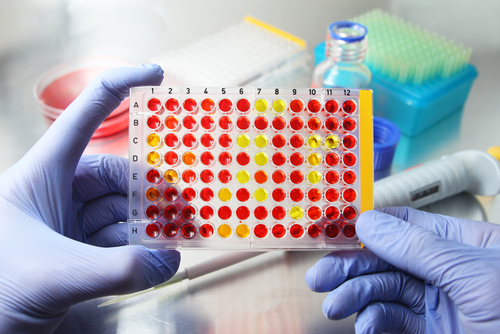Mixed Results From Phase 2 Trial of Edratide in Patients With Systemic Lupus Erythematosus
Written by |

Results from a phase 2 clinical trial recently published in the journal Lupus Science and Medicine revealed that edratide (hCDR1, Teva) is effective and has high tolerability in patients with a diagnosis of systemic lupus erythematosus (SLE). However, the study failed to meet its primary endpoints.
Systemic lupus erythematosus (SLE) is a multisystem autoimmune disease characterized by the production of autoantibodies, and by impaired function of T and B cells. The pathogenesis of SLE has been shown to involve B and T cell apoptosis, cytokines and impaired regulatory T cell function.
Edratide (hCDR1) is a novel synthetic peptide of 19 amino acid residues based on the complementarity-determining region 1 (CDR1) of a human anti-DNA monoclonal antibody expressing a major idiotype denoted 16/6 Id. Treatment with hCDR1 leads to a cascade of events that culminate in the downregulation of SLE-associated autoreactive T and B cells and in the clinical amelioration of lupus. hCDR1 is therefore a candidate for the treatment of SLE patients.
To assess the safety and efficacy of Edratide in patients with SLE, in the study titled “Safety and efficacy of hCDR1 (Edratide) in patients with active systemic lupus erythematosus: results of phase II study”, Murray B Urowitz from the Toronto Western Hospital, University of Toronto in Toronto, Canada and colleagues evaluated 340 SLE patients who were enrolled in the PRELUDE study, a phase II, multinational, multicentre, randomised, double–blind, placebo-controlled study to assess the efficacy, tolerability and safety of Edratide in patients with mild-to-moderate SLE.
Subjects who scored between 6 and 12 in the Systemic Lupus Erythematosus Disease Activity Index 2000 (SLEDAI-2K) score received concomitant medications, such as prednisone, NSAIDs, and antimalarials for at least 1 month prior to study enrolment.
Eligible subjects were randomised in a 1:1:1:1 ratio into one of the following four treatment groups: 0.5 mg Edratide, 1 mg Edratide, 2.5 mg Edratide, Placebo for Edratide. Edratide was administered weekly as a subcutaneous injection prepared from freeze-dried (lyophilised) powder containing Edratide acetate in doses corresponding to 0.5 mg, 1.0 mg or 2.5 mg of Edratide free base and/ or 120 mg sulfobutylether beta-cyclodextrin sodium (SBECD, Captisol).
All SLE patients underwent 8 weeks of treatment with a combination of steroids and edratide. This was followed by a period of 18 weeks of a tapered steroid withdrawal.
Results revealed that Edratide was well tolerated and safe. However, the trial primary endpoints based solely on SLEDAI-2K were not met. The secondary predefined endpoint, British Isles Lupus Assessment Group (BILAG) Responder Index, was met in 40% of patients who received 0.5 mg Edratide. Results also revealed that the BILAG secondary endpoint was met for the 0.5 mg Edratide group of patients for a number of subgroup dose levels, including low or no steroids, seropositivity and patients with 2 grade BILAG improvement.
Researchers noted that at the time this trial was conducted it was generally accepted that efficacy of SLE-modifying agents could be shown at 6 months. However, it has subsequently been shown that the minimum time for proving efficacy is approximately 1 year. The team indicates that future studies with Edratide should be performed for longer periods.




